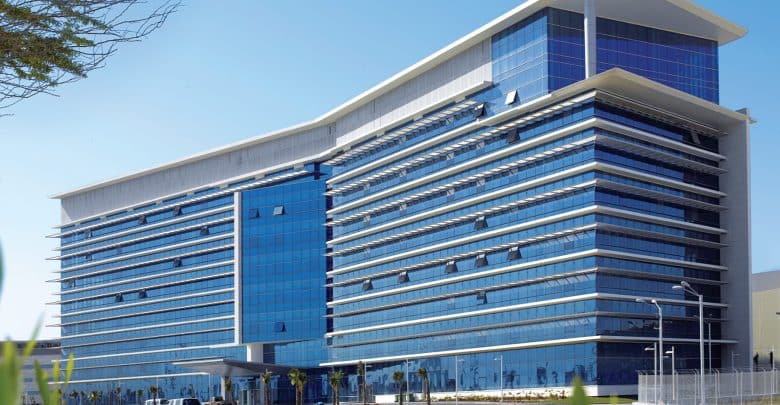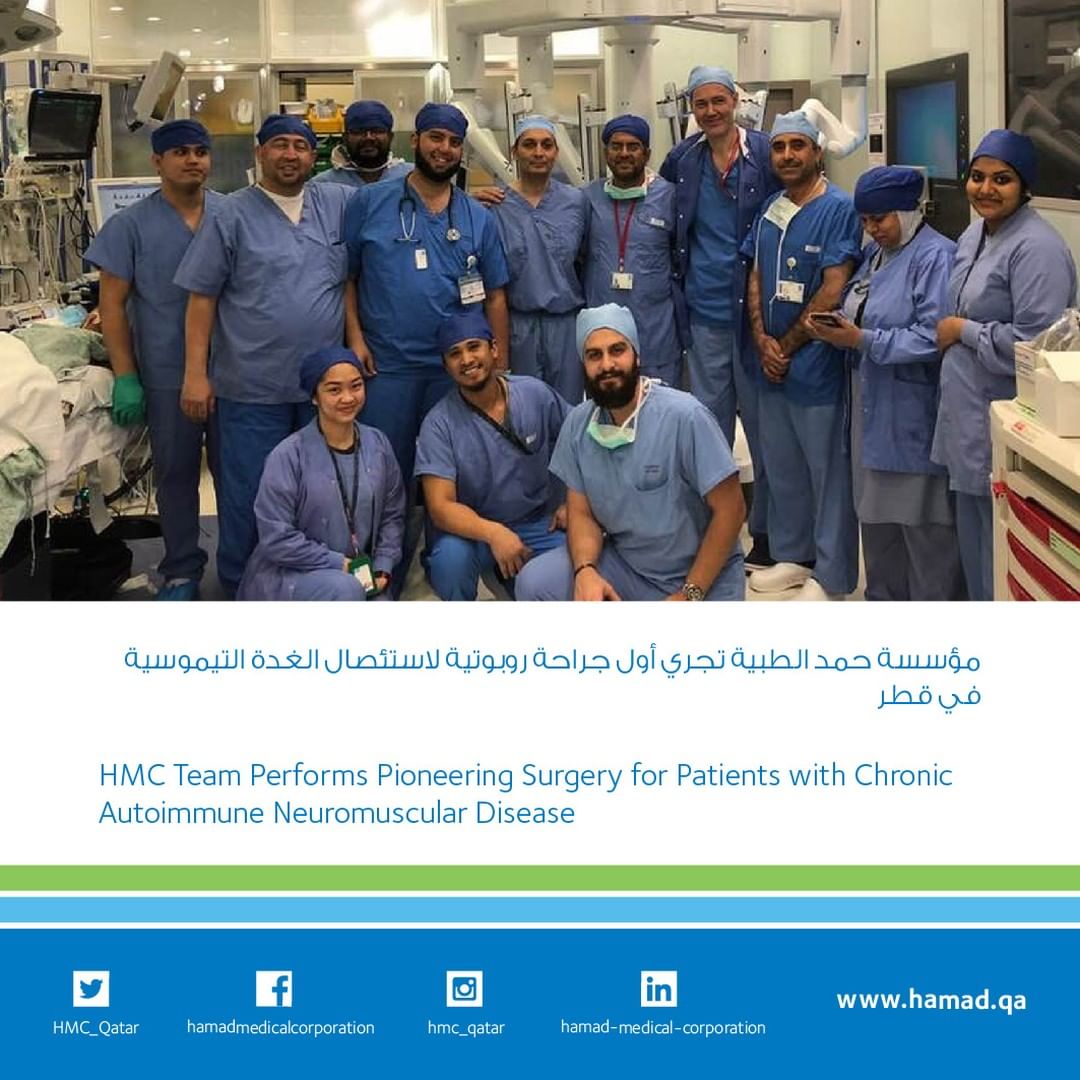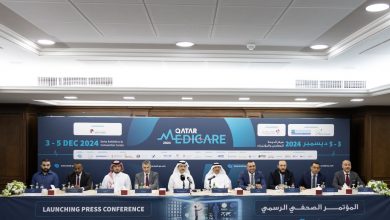
HMC team performs pioneering robotic surgery
فريق من «حمد الطبية» يجري جراحة رائدة لاستئصال الغدة الزعترية
DOHA: The Thoracic Surgery team at Hamad General Hospital has performed the first completely portal robotic thymectomy for myasthenia gravis in Qatar. The surgery represents an important milestone in the treatment of patients with myasthenia gravis who require surgical intervention, providing them with a shorter length of stay in hospital, quicker recovery and reduced pain.
Myasthenia gravis is a rare long-term condition that causes muscle weakness. Most commonly, it affects the muscles that control the eyes and eyelids, facial expressions, chewing, swallowing, and speaking but it can also affect most parts of the body. It can result in double vision, drooping eyelids, trouble talking, and trouble walking. Onset can be sudden and the disease most commonly affects young women and older men.
Dr Yousuf Al Maslamani, Medical Director of Hamad General Hospital, said that with myasthenia gravis, the communication system between the nerves and muscles is damaged by the immune system, making the muscles weak.
“Myasthenia gravis is a rare but disabling autoimmune neuromuscular disease. In addition to anticholinesterase and immunosuppressive therapy, removal of the thymus gland in the chest (thymectomy) is considered the frontline treatment option, especially in young patients. The traditional method of thymectomy involved the opening of a patient’s chest by cutting through the breastbone,” said Dr Al Maslamani.
Dr Abdulla Al Ansari, Chairman of Surgery and Acting Chief Medical Officer at HMC, said robotic thymectomy is the most successful and least invasive approach for helping myasthenia gravis patients. He said the approach is the gold standard for the treatment.
During robotic surgery, surgeons make a small pencil-sized hole in the body and insert robotic arms and a camera. The camera is used to provide a 3D magnified view of the surgical site.
The surgical team who performed the procedure consisted of Dr Rashid Haq, DrJassim Abdulla, and Dr. Mohammed Muslim. The pioneering surgery was completed under the supervision of Dr Faiz Bhora, Chief of Thoracic Surgery at Mount Sinai Roosevelt and Mount Sinai St. Luke’s Hospitals and Director of Thoracic Surgical Oncology at St. Luke’s-Roosevelt Hospital Center in New York City, US. Dr Bhora, who is also the current President of the Eastern Cardiothoracic Surgical Society and the New York General Thoracic Surgical Society said the completion of this first-of-its-kind procedure in Qatar represents a further step in the evolution of minimally invasive surgery.
أجرى فريق من قسم جراحة القلب والصدر في مستشفى حمد العام، أول جراحة روبوتية بالكامل في دولة قطر، لاستئصال الغدة الزعترية لدى المرضى المصابين بالوهن العضلي.
وتمثّل هذه الجراحة علامة بارزة في علاج المصابين بالوهن العضلي، الذين تتطلب حالتهم الصحية الخضوع لتدخل جراحي، حيث تساهم هذه العملية في الحد من مدة إقامتهم في المستشفى، وتساعدهم على التعافي بشكل أسرع وتقليل الألم.
والوهن العضلي عبارة عن حالة مرضية مزمنة نادرة الحدوث تؤدي إلى ضعف العضلات، وتتمثل أعراضه الأكثر شيوعاً في ضعف العضلات التي تتحكم في حركة العين والجفون، وتعابير الوجه، والمضغ، والبلع والنطق، كما يمكن أن يتسبب بالوهن في معظم أجزاء الجسم. ومن الممكن أن ينتج عن هذه الحالة المرضية ازدواج الرؤية، وتدلي الجفون، وصعوبة في التحدث والمشي، بحيث تظهر الأعراض بشكل مفاجئ، وتصيب في أغلب الأحيان النساء وكبار السن.
وفي هذا السياق، أكد الدكتور عبدالله الأنصاري -الرئيس الطبي بالوكالة في مؤسسة حمد الطبية، ورئيس أقسام الجراحة- أن الجراحة الروبوتية لاستئصال الغدة الزعترية، تعتبر من أكثر التقنيات اللاجراحية نجاحاً في مساعدة المرضى المصابين بالوهن العضلي.
وأضاف: «تمثل هذه التقنية، التي لا تتطلب سوى تدخل جراحي محدود المعيار الذهبي المعتمد حالياً، في جراحة الغدة الزعترية. مؤسسة حمد الطبية تسعى بشكل متواصل إلى توفير الرعاية الأفضل والأكثر تقدماً وأماناً للمرضى الذين نعمل على خدمتهم».
من جانبه، أوضح الدكتور يوسف المسلماني -المدير الطبي لمستشفى حمد العام- أن جهاز المناعة يتسبب في تلف جهاز التواصل بين الأعصاب والعضلات، لدى المرضى المصابين بالوهن العضلي، ما يؤدي إلى إصابة العضلات بالضعف.;




